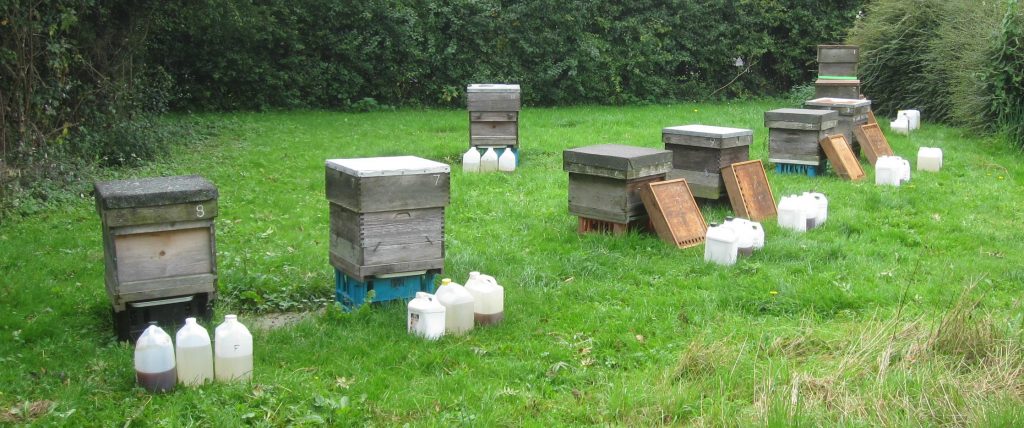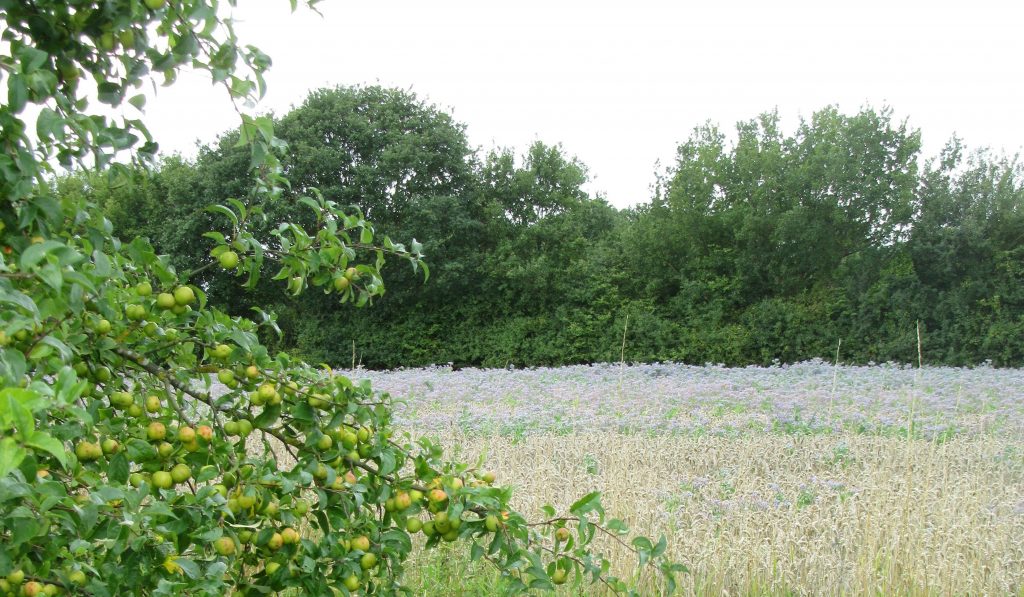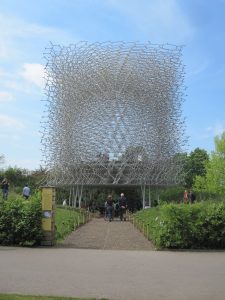Apple weekend at Audley End House was once again a terrific weekend. English Heritage say the foot-fall was 4500 over the two days. Talking bees, pollination and honey for two days solid was very tiring but greatly rewarding. One very interesting visitor who introduced herself to me was none other than Ted Hooper’s granddaughter Lauren who told me that sadly, they no longer have a beekeeper in the family.

The bees have all had their usual amount of winter feed; 8l of sugar solution and 3l of waste honey. Hive 1 had the container of Apikel which I was given. Interestingly not all of this had been taken down but it could have been a case of them not liking it. I removed the feeder, gingerly removed the middle frame to find brood in all stages so carefully replaced it knowing they were queen-right. Had there been a problem, some of the earliest brood would have had emergency queen cells. As it was, the reason was that apart from the brood in the centre, the brood box was chock-a-block with stores.
Three other hives have only taken some of their feed and I’m hoping they are in a similar state because they had ample nectar flowing from all the volunteer borage in the field behind. As Tom, the farmer, freely admitted to me, "Yes, we cocked up there."

The Apivar is almost at the end of its recommended insertion time but the varroa are still dropping high weekly figures. Some are still up in the hundreds per week. Hopefully they should fall to single figures any day now and the strips can be removed.



